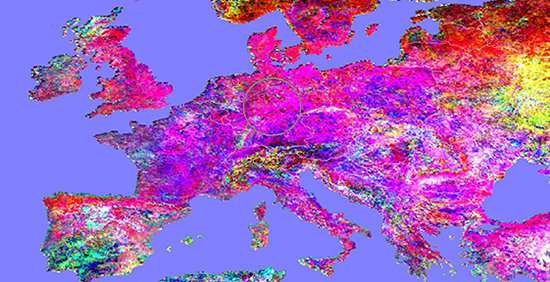The image time series modeling tool Earth Trends Modeler, which analyzes seasonal trends. Credit: University at Albany
Starting this spring, students seeking a future in using technology to help solve a wide-range of social and environmental challenges can pursue a Master of Science degree in Geographic Information Science (GIS).
GIS—the study of the data structures and computational technologies that capture, process, visualize and analyze geographic information—encompasses everything from working with information systems such as drones and personal and global navigation systems (think: much more than the Google Maps that lives on your phone), remote sensing, special statistics and everything in between.
James Mower, associate professor of Geography and Planning, spearheaded the development of the program and explains that the study of GIS is being applied all around us. "Though many people don't realize it because it's done behind-the-scenes, geographic information science is at the heart of almost all decision-making at many of our state and federal agencies, including everything from plans for environmental conservation, health, taxation, urban planning, homeland security, emergency management provision of services, and so much more."
Responding to inquiries from both current and prospective students looking to pursue a Masters in GIS, the Department of Geography and Planning began developing the graduate program, an extension of an already existing graduate certificate program. The program received approval from the New York State Education Department this month.
"We are excited about the new master's in GIS and view it as an important piece of UAlbany's academic expansion," said Kevin Williams, vice provost and dean for Graduate Studies. "GIS is both a high-growth and high-needs discipline, and this program will serve the educational and economic needs of the area and New York State."
Students aren't the only ones interested: many New York State agencies conducting their own geographic information science operations, including the Department of Environmental Conservation and the Department of Health, have long turned to UAlbany to partner with them on an internship program where students provide real GIS expertise. This delivers both experiential learning opportunities to the students and invaluable assistance to the agencies.
Now, interns will be armed with the expertise to make them more valuable than ever.
"Our students are learning the very techniques, methodologies, and science behind using technology systems, such as drones and GPS, among others, to process, retrieve, and display geographic information," said Mower.
Provided by University at Albany




















